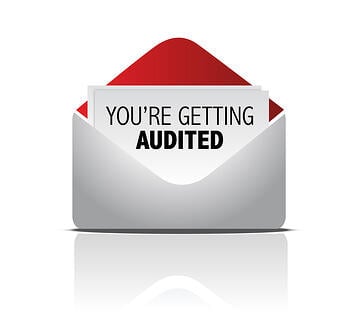There is a 20% chance that you as an eligible provider may get audited and will be required to substantiate every single measure, eligibility requirement, or even ownership of a certified EHR.
Once you assume that a meaningful use audit is probable, the next step is to find ways to prepare for it. Meaningful use audit conducted by the Centers for Medicare & Medicaid Services, or one of its agents, compares the information entered into the attestation system  with documentation maintained by the provider. Without proper documentation, medical professionals can lose EHR incentive payments provided as part of the Health Information Exchange program.
with documentation maintained by the provider. Without proper documentation, medical professionals can lose EHR incentive payments provided as part of the Health Information Exchange program.
What Do Auditors Look For?
The primary auditing agent Figloiozzi and Company offers information about what they look for in an audit via an article by iHealthBeat. They break down the data to four types:
- ONC-ATCB Certification Documentation – proof from the Office of the National Coordinator for Health IT that the providers EHR system is certified for meaningful use attestation.
- Documentation supporting the attestment to the core set of meaningful use criteria
- Documentation supporting the attestment to the menu set items included in the meaningful use criteria
- Methodology for determining emergency department admissions for hospitals only
Core Measures Checklist
Documentation can be broken down to two key sections:
- Core measures
- Menu items
By creating a checklist for each category, providers ensure they have all the necessary documentation is one central binder for each annual attestment. The core measures focus on the required objectives for each stage.
1. CPOE for Medications
Providers must offer the report used to obtain the numerator and denominator or a document to explain a claim of exclusion. Include:
- EP reported using all patient records
- EP reported using only patient records on the EHR
2. Drug Interaction Check
Screenshot of EHR settings that show active drug-drug and drug-allergy checking during the reporting period. When possible, store an interaction alert audit report, as well.
3. Problem List
Store the report used to obtain the numerator and denominator
4. e-Prescribing
Documentation used to obtain numerator and denominator or report that documents claim of exclusion. Include either:
- EP reported using all patient records
- EP reported using only patient records maintained in the certified EHR
5. Active Medication List
Store the report used to obtain numerator and denominator
6. Medication Allergy List
Store the report used to obtain numerator and denominator
7. Demographics
Store the report used to obtain numerator and denominator
8. Vital Signs
Documentation used to obtain numerator and denominator or report that documents claim of exclusion. Include either:
- EP reported using all patient records
- EP reported using only patient records maintained in the certified EHR
 9. Smoking Status
9. Smoking Status
Documentation used to obtain numerator and denominator or report that documents claim of exclusion. Include either:
- EP reported using all patient records
- EP reported using only patient records maintained in the certified EHR
10. Clinical Quality Measure (CQMs)
- List of core or alternate core CQMs submitted
- List of three additional CQMs selected
- Store report used to obtain numerator and denominator for each CQM
11. Clinical Decision Support Rule (CDS)
Provide a screenshot from the EHR that shows the clinical decision support rule with any other documentation to prove CDS in use during the entire reporting period. If necessary, contact your vendor audit documentation.
12. Electronic Copy of Health Information
Documentation used to obtain numerator and denominator or report that documents claim of exclusion. Include either:
- EP reported using all patient records
- EP reported using only patient records maintained in the certified EHR
13. Clinical Summaries
Documentation used to obtain numerator and denominator or report that documents claim of exclusion plus:
- A copy of the clinical summary showing use of all required components
- EP reported using all patient records
- EP reported using only patient records maintained in the certified EHR
14. Electronic Exchange of Clinical Information:
Testing documentation including screenshots that show the test sending the data and one showing receipt
15. Protect Electronic Health Information
Security risk analysis to determine vulnerability or a letter explaining the deficiencies and signed proof of corrections
In addition to a checklist for core measures, providers should create one for the five menu items selected required complete with audit documentation.
You can download a complete copy of a formatted, printable checklist from HealthInfoNet. With the list in place, staff should build a binder book of evidence to support attestment choices to give to reviewers during a meaningful use audit.
This is the second of a three-part series on meaningful use audits. The first post: Meaningful Use Audit: What Physicians Must Expect from it? is available for review. The next blog will offer a practical survival guide, should you face the auditor.
Readers may also like the following:
What questions must you ask EHR vendor prior to EHR selection?
Why switching to RevenueXL EHR Software makes more sense?
What must you bear in mind for smooth transitioning to a new EHR System?
What are the challenges faced by small clinics in adopting EHR System?
Watch the following video:






